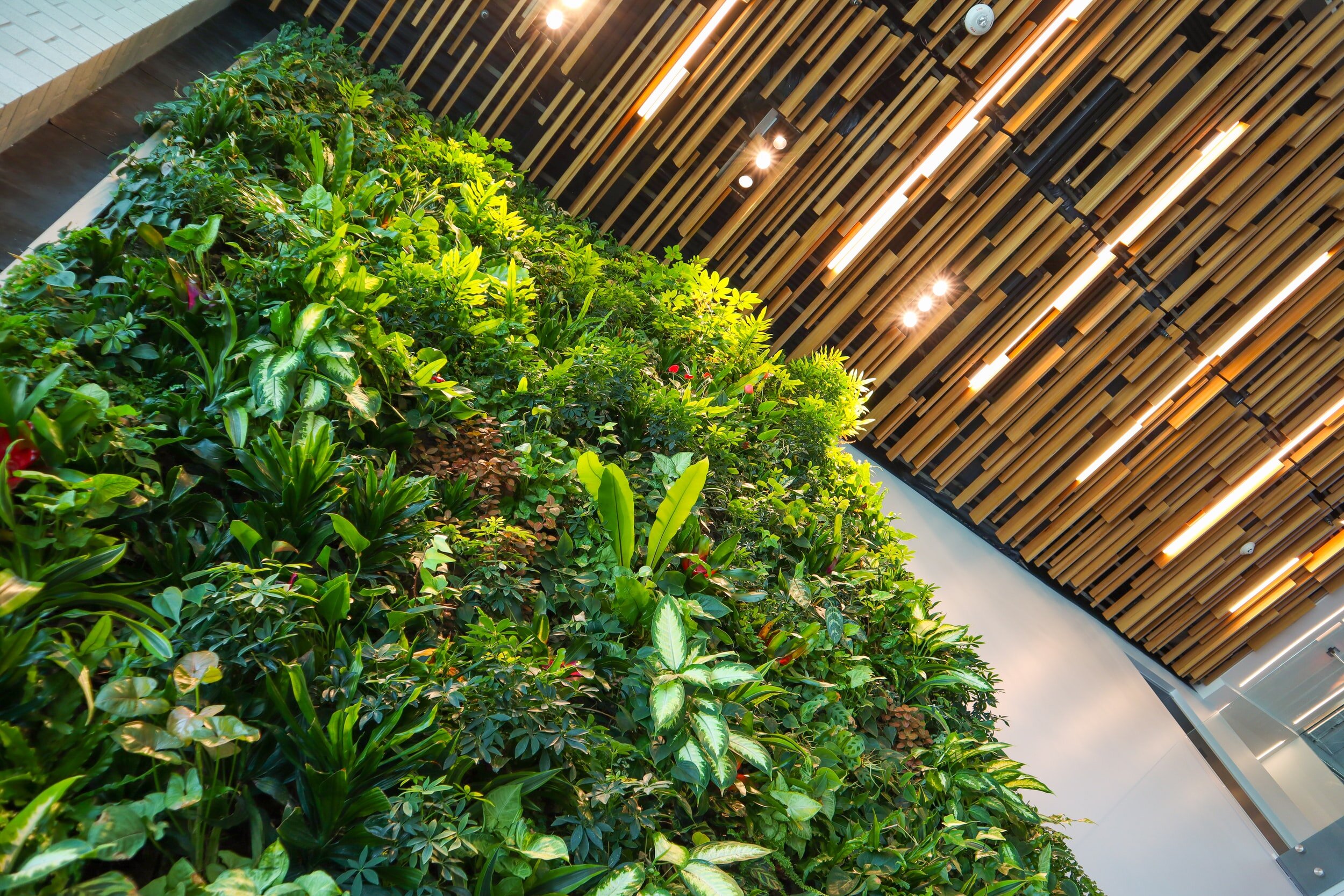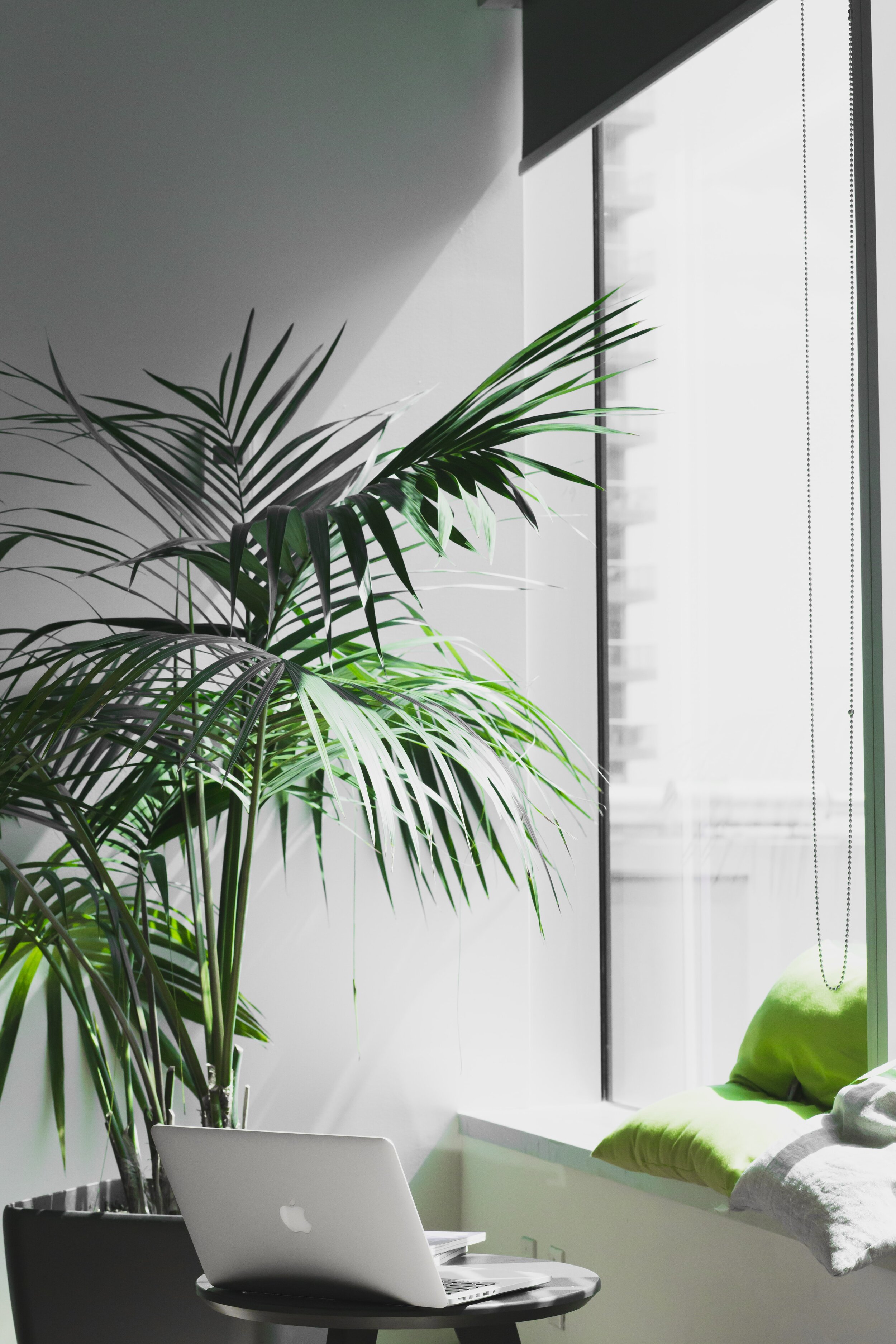Why biophilic office design should be part of your return-to-the-workplace strategy
Insight
Why biophilic office design should be part of your return-to-the-workplace
strategy (Part 1)
According to influential biologist E. O. Wilson, “nature holds the key to our aesthetic, intellectual, cognitive and even spiritual satisfaction.”
Yet, we spend roughly 90% of our lives indoors. Chained to our desks and glued to our technology. Often denying ourselves a chance for mental and physical recuperation.
And that was before the pandemic came a long and left us with no choice but to stay in.
Our confinement has certainly taken its toll on our physical and mental health. But what it has given us is an even deeper appreciation for the restorative power of being outside and close to nature.
Getting back to “normal”
Now, thanks to the success of the UK’s vaccine rollout, we are hopeful of a return to normal by the summer.
But when it comes to returning to the workplace, we’re not sure if the old normal is going to cut it.
Businesses will be welcoming back a stressed-out workforce, many of whom will be feeling frazzled from having to juggle work and homeschooling.
Supporting their wellbeing will be crucial if businesses are to perform efficiently and succeed in the turbulent, post-COVID economic climate.
As workplace consultants, we’re passionate about helping businesses to translate the lessons we’ve learnt about ourselves as human beings over the past year into crucial strategies that take care of staff wellbeing in the wake of the pandemic and in future.
Promoting wellness in the workplace by satisfying our desire to be close to nature with the latest innovations in biophilic design is a great place to start.
Read on to find out why.
What is biophilic office design?
Derived from Greek, the term “biophilia” relates to humanity’s deep connection to, and love of, nature.
It was popularised by E. O. Wilson in his 1984 work “Biophilia”, in which he described human beings as having an “innate tendency to focus on life and lifelike processes” as a consequence of our evolution.
As a result, proximity to nature and nature’s processes has a profound and positive impact on our wellbeing and productivity.
Biophilic design grew up around this idea as architects and interior designers developed ways to incorporate nature and natural resources into the built environment.
These could include elements such as:
- Curved lines, domes and arches
- Natural materials, textures and tones
- Naturally occurring patterns such as spirals and honeycombs
- Focus on natural light or artificial lighting systems that mimic our circadian rhythms
- Presence of water
- Internal and external views onto nature
- Attention to thermal and acoustic comfort
- Improvements to air quality and air flow
- Spaces for rest, recuperation and collaboration
- Strong sense of place, culture and brand purpose
And, of course… plants. Lots and lots of plants.
The business case for biophilic design in the workplace
It may appear that biophilic design features are simply a nice to have at a time like this.
But as a concept it has been shown to deliver significant business benefits.
Kat Knight, Senior Designer at TDA, is a keen advocate for biophilic design in the workplace.
“We really encourage our clients to introduce biophilic interior design elements into the workplace.
These elements serve a much greater purpose than simply aesthetics. We know that by incorporating nature and natural processes into their office design, businesses can have a significant, positive impact on the health and wellbeing of their staff. In fact, this is a proven way to increase productivity and creativity, while reducing stress at the same time.
We help businesses to do this by taking a consultative look at how we can improve natural light within the space, provide views onto nature, incorporate natural materials, textures and patterns, and improve ventilation. As well as striking a balance between an emphasis on open space and safe, secure areas that are perfect for recuperation and quiet working.”
You need only look at tech-giant Amazon’s Seattle HQ to know that it is a strategy worth taking seriously.
Dubbed “The Spheres”, the colossal, jungle-inspired orbs come complete with rope bridges, treehouses, streams, living walls and thousands of plants, placed there to encourage employees to think creatively and to boost productivity. All while reducing stress and improving wellbeing.
This is an extreme example. But it stands to reason that far from being just a trend, biophilic office design is a powerful strategic tool, worth considering by any business looking to make a triumphant comeback to the workplace. Even if they don’t have Amazon’s budget.
Healthy, happy employees make for a productive workforce
In their influential paper The Economics of Biophilia, sustainability consulting firm Terrapin Bright Green identifies the main causes for deficiencies in productivity as:
- Absenteeism
- Loss of focus
- Negative mood
- Poor health
Businesses were already having to combat these issues at the time the paper was published in 2015. Fast forward 6 years and these issues will have been magnified by the pandemic and its negative effect on our mental health.
Findings from a 2019 study on health in the workplace published by The Financial Times suggest that employees were losing 14.6% of their working hours due to absence and presenteeism. Representing a loss of 38 productive days per employee per year.
Allegedly, this equates to a £92bn loss in productivity for the UK economy.
The report also states that 56.5% of employees surveyed were experiencing one or more work-related stress factors while 10% claimed to have financial concerns.
Factor the events of the past year into the equation and it’s clear to see that businesses are likely to be welcoming back a workforce in crisis.
The fact is that workplace wellbeing is no longer just a nice-to-have that’s reserved for tech-giants and quirky start-ups. But an absolute necessity for all businesses wanting their workforce to thrive following the pandemic.
As we emerge from the third national lockdown, businesses have a real opportunity to demonstrate that they care by stepping up to play a major role in supporting their staff’s journey to wellness after such a tough year.
And we think incorporating biophilic design into the workplace is the perfect way to do just that.
Stay tuned for Part 2 on this fascinating topic where we will delve deeper into the benefits of biophilic office design, and offer some fresh inspiration.
Wondering how you can be supporting the health and wellbeing of your staff as they return to the workplace?
Find out how we can help with our Workplace Consultancy and Sustainability & Wellbeing services.
Or get in touch and let’s talk it through.
Get in touch
Want to learn more?
Our experts are here to guide and support you through your project.







